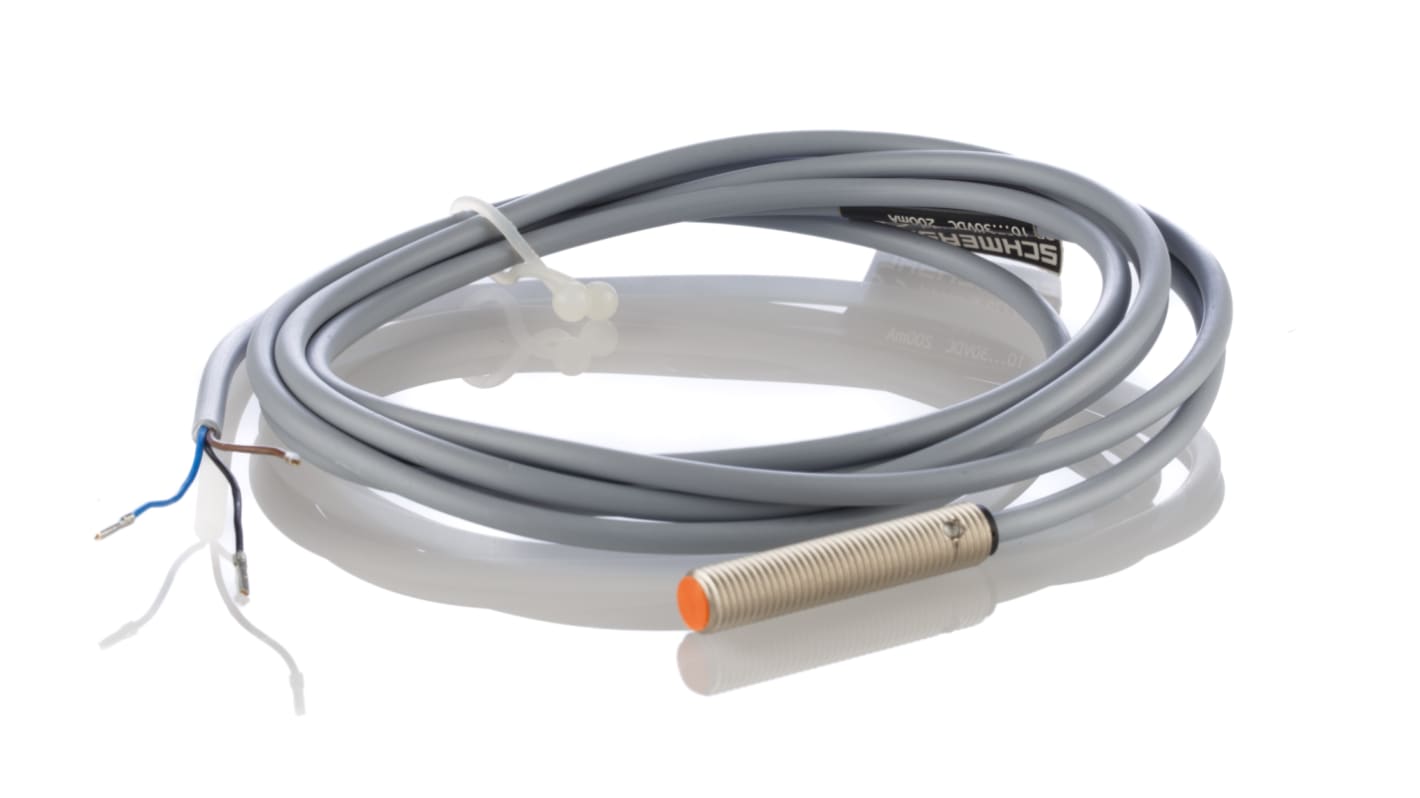Schmersal Inductive Threaded Barrel Proximity Sensor, M8, 2 mm Detection, PNP NO, 10 → 30 V dc
- RS 재고 번호:
- 470-4380
- 제조 부품 번호:
- IFL-2-8M-10P
- 제조업체:
- Schmersal

Subtotal (1 unit)*
₩138,932.00
재고있음
- 3 개 단위 배송 준비 완료
- 추가로 2026년 1월 12일 부터 5 개 단위 배송
더 자세한 내용이 필요하신가요? 필요한 수량을 입력하고 '배송일 확인'을 클릭하면 더 많은 재고 및 배송 세부정보를 확인하실 수 있습니다.
단위당 | 한팩당 |
|---|---|
| 1 + | ₩138,932.00 |
* 참고 가격: 실제 구매가격과 다를 수 있습니다
- RS 재고 번호:
- 470-4380
- 제조 부품 번호:
- IFL-2-8M-10P
- 제조업체:
- Schmersal
사양
기술적 참조
제정법과 컴플라이언스
제품 세부 사항
제품 정보를 선택해 유사 제품을 찾기
모두 선택 | 제품 정보 | 값 |
|---|---|---|
| 브랜드 | Schmersal | |
| Thread Size | M8 | |
| Sensor Technology | Inductive | |
| Detection Range | 2 mm | |
| Body Style | Threaded Barrel | |
| Digital Switching Output Type | PNP | |
| Output Function | NO | |
| Connection Type | Pre-Cabled | |
| Cable Length | 2m | |
| Supply Voltage | 10 → 30 V dc | |
| Length | 42mm | |
| IP Rating | IP67 | |
| Mounting Type | Flush Mount | |
| Housing Material | Brass | |
| Maximum DC Voltage | 30V | |
| Minimum Operating Temperature | -25°C | |
| Maximum Operating Temperature | +70°C | |
| Short Circuit Overload Protection | Yes | |
| Series | IFL | |
| Standards Met | CE, EN 60947-5-2 | |
| Depth | 8mm | |
| Maximum Switching Frequency | 3kHz | |
| Switching Frequency | 3 kHz | |
| Reverse Polarity Protection | Yes | |
| Switching Current | 200 mA | |
| Shielding | Shielded | |
| 모두 선택 | ||
|---|---|---|
브랜드 Schmersal | ||
Thread Size M8 | ||
Sensor Technology Inductive | ||
Detection Range 2 mm | ||
Body Style Threaded Barrel | ||
Digital Switching Output Type PNP | ||
Output Function NO | ||
Connection Type Pre-Cabled | ||
Cable Length 2m | ||
Supply Voltage 10 → 30 V dc | ||
Length 42mm | ||
IP Rating IP67 | ||
Mounting Type Flush Mount | ||
Housing Material Brass | ||
Maximum DC Voltage 30V | ||
Minimum Operating Temperature -25°C | ||
Maximum Operating Temperature +70°C | ||
Short Circuit Overload Protection Yes | ||
Series IFL | ||
Standards Met CE, EN 60947-5-2 | ||
Depth 8mm | ||
Maximum Switching Frequency 3kHz | ||
Switching Frequency 3 kHz | ||
Reverse Polarity Protection Yes | ||
Switching Current 200 mA | ||
Shielding Shielded | ||
제외
Inductive proximity switch, flush, PNP
Flush-mountable
PNP type
NOC function
PNP type
NOC function
Schmersal Inductive Proximity Sensor, 30V DC, 200mA - IFL Series - IFL-2-8M-10P
Precisely detect and position metal objects with this inductive proximity sensor from Schmersal. Its non-contact electronic switching function means there's no bounce when switching direct current, ensuring reliable and consistent sensing. The device features integrated short circuit and current overload protection to increase safety. The nickel-plated brass housing offers resistance against corrosion, so the component is suitable for use in humid environments. As it doesn't make contact with other objects, it's less likely to be damaged by mechanical wear, ensuring long-lasting, reliable operation.
Features & Benefits
• Abrasion-resistant PVC (polyvinyl chloride) cable mantle for durability
• Meets IEC (International Electrotechnical Commission) safety standards for low-voltage switchgear
• IP67 (ingress protection) rating means it's dust-tight and water-resistant for use in demanding environments
• Meets IEC (International Electrotechnical Commission) safety standards for low-voltage switchgear
• IP67 (ingress protection) rating means it's dust-tight and water-resistant for use in demanding environments
Applications
• Automated production lines
• Hoisting and lifting
• Packaging warehouses
• Safety systems
• Hoisting and lifting
• Packaging warehouses
• Safety systems
How does a proximity sensor work?
A proximity sensor uses an oscillating circuit to generate a concentrated, high-frequency electromagnetic field. This determines the presence of ferrous metal objects. It converts a change in its oscillating amplitude into an electrical signal, which then causes the sensor to change its switching state.
관련된 링크들
- Schmersal Inductive Threaded Barrel Proximity Sensor, M8, 8 mm Detection, PNP NO, 10 → 30 V dc
- Schmersal Inductive Threaded Barrel Proximity Sensor, M8, 2 mm Detection, PNP NO, 10 → 30 V dc
- Schmersal Inductive Threaded Barrel Proximity Sensor, M18, 8 mm Detection, PNP NO, 10 → 30 V dc
- Schmersal Inductive Threaded Barrel Proximity Sensor, M8, 5 mm Detection, PNP NO, 10 → 30 V dc
- Schmersal Inductive Threaded Barrel Proximity Sensor, M8, 2 mm Detection, PNP NO, 15 → 250 V ac
- Schmersal Inductive Threaded Barrel Proximity Sensor, M8, 3 mm Detection, PNP NO, 15 → 250 V ac
- Schmersal Inductive Threaded Barrel Proximity Sensor, M8, 5 mm Detection, PNP NO, 15 → 250 V ac
- Schmersal Inductive Threaded Barrel Proximity Sensor, M8, 10 mm Detection, PNP NO+NC, 10 → 60 V dc
